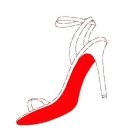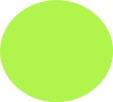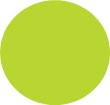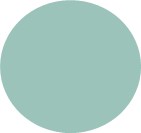I am often asked what interesting cases I am working on. Recently I have been involved in matters where clients have been accused of using colors that allegedly infringe on the trademark rights of others. When I describe these cases as examples of interesting cases, I am often greeted by a puzzled, confused look, followed by the inevitable question: “Colors can’t be trademarks, can they?”
The Supreme Court itself answered this question in 1995, ruling that color can, in fact, be a trademark. In so ruling, the Court explained that the language of the federal Trademark Act
says that trademarks “includ[e] any word, name, symbol, or device, or any combination thereof.” Since human beings might use as a “symbol” or “device” almost anything at all that is capable of carrying meaning, this language, read literally, is not restrictive. The courts and the Patent and Trademark Office have authorized for use as a mark a particular shape (of a Coca-Cola bottle), a particular sound (of NBC’s three chimes), and even a particular scent (of plumeria blossoms on sewing thread). If a shape, a sound, and a fragrance can act as symbols why, one might ask, can a color not do the same?[1]
Thus, the Court concluded that a shade of “green-gold” as applied to press pads manufactured and sold to dry cleaners (the subject matter of the case before the Court) could function as a trademark.
While the Supreme Court has established that color can function as a trademark, I usually do not respond to the inevitable question by quoting or referring to the Supreme Court’s decision. Instead, I return to the function of a trademark—to identify the source of a product or service. When someone sees the Golden Arches when they are driving, they know the source of food being served at that restaurant. Likewise, when someone buys CALVIN KLEIN clothing, they know the source of what they are buying.
Color can function in the same way. For example, if you see someone carrying a box that is this color:  , in all likelihood you will know that the box came from Tiffany & Co. and that someone has gotten or is getting a nice gift. Similarly, if you see a truck on the street that is this color:
, in all likelihood you will know that the box came from Tiffany & Co. and that someone has gotten or is getting a nice gift. Similarly, if you see a truck on the street that is this color:  you will likely know that it is UPS truck making deliveries. Or, to take an example that was in the news a few years back, many people seeing a shoe with a red sole
you will likely know that it is UPS truck making deliveries. Or, to take an example that was in the news a few years back, many people seeing a shoe with a red sole  will know that the shoe is made by Christin Louboutin. These examples usually induce a slow nodding, acknowledging that colors can be trademarks and that their doing so does make sense.
will know that the shoe is made by Christin Louboutin. These examples usually induce a slow nodding, acknowledging that colors can be trademarks and that their doing so does make sense.
If you are nodding your head as you read this (as I hope you are), then the next question, which usually does not come up in conversation, is how does a color become a trademark? That generally happens as part of a deliberate strategy involving time and money. For color to identify source, the public must come to identify it with that source. That happens only after the public sees the color used in connection with the goods or services over a long period of time so that the color becomes almost a shorthand for the brand. Repeated exposure to products featuring the color, advertising, product packaging and/or other promotional efforts featuring the color is the only way to develop that association.
The other question that color as a trademark raises is how do you know when you infringe on someone else’s trademark color? That is a more difficult question to answer. In trademark matters, infringement occurs when consumers are likely to be confused into believing that goods or services originating from one source actually come from another source. This is a very subjective test and, particularly with color, there are no easy answers. In evaluating infringement, a number of factors are usually considered, such as the color itself; where the goods or services are sold; the sophistication/level of knowledge of the customers for the goods or services; how expensive the goods or services are; and any other relevant market factors.
Two recent cases we have worked on illustrate the difficulty in determining whether a color infringes someone else’s trademark color. Does this color  infringe on this color
infringe on this color  when both are used on garden hoses? Or does this color
when both are used on garden hoses? Or does this color  infringe this color
infringe this color  when both are used on prosecco? That the colors may be different Pantone colors is not always the answer. With that, I leave it to you to be the judge.
when both are used on prosecco? That the colors may be different Pantone colors is not always the answer. With that, I leave it to you to be the judge.
No matter what you think about the above examples, this much should be apparent: color can and does function as a trademark. If your company has used the same color as part of its brand identity for a number of years, or if it plans to use a color as a long-term part of its brand, speak with experienced trademark counsel to make sure that your color is protected.
[1] Qualitex Co. v. Jacobson Products Co., 514 U.S. 159, 161 (1995), internal citations omitted.